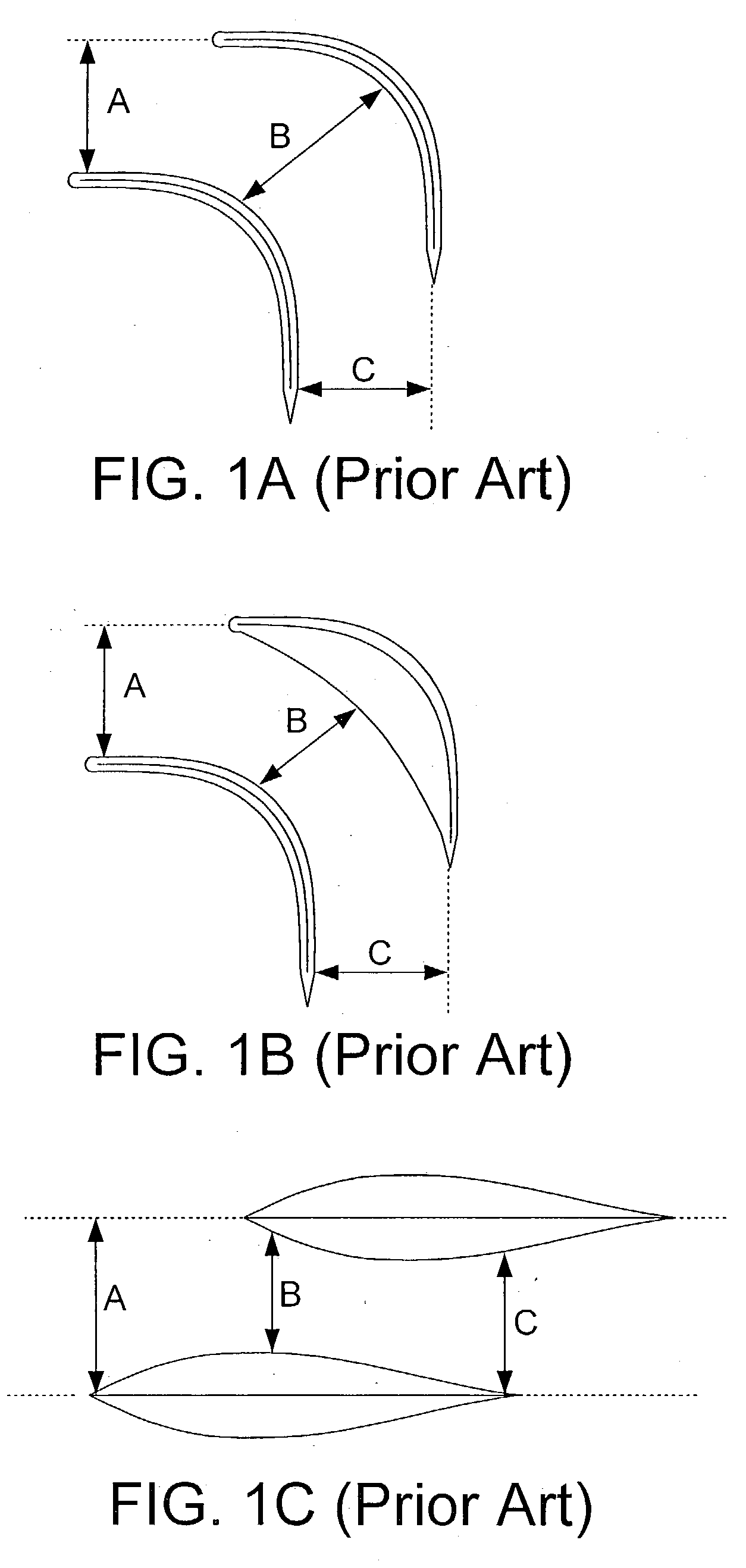Vertical take-off and landing vehicles
a technology of vertical landing and landing vehicle, which is applied in the direction of efficient propulsion technology, vertical landing/take-off aircraft, aircraft navigation control, etc., can solve the problems of engine producing extra thrust, wing generating negative lift, and aircraft control causing problems
- Summary
- Abstract
- Description
- Claims
- Application Information
AI Technical Summary
Problems solved by technology
Method used
Image
Examples
first embodiment
[0074] In this embodiment, the wings 118 and the rear nacelles 114 and 116 have been moved further towards the rear of the fuselage 112 as compared to the first embodiment, and the forward pair of nacelles are attached to fuselage 112 forward of the canopy 128. All four nacelles 114-117 can rotate to approximately 45 degrees from the horizontal and have interior vanes (not shown) that can be deployed to selectively deflect the airflow through the nacelle from 0 to 45 degrees.
[0075] FIG. 17 is a perspective view of this embodiment showing the wings 118 folded at their break lines 119. FIG. 18 is a side elevational view showing the nacelles 116 and 117 in their horizontally oriented forward flight position. The dashed lines 116' show the nacelle positions depicted in FIG. 17.
[0076] FIG. 19 is a side elevational view as in FIG. 16 and 18 except that in this view the nacelles are shown rotated substantially 45 degrees into their take-off / landing positions.
[0077] The principal difference...
second embodiment
[0081] FIG. 20 is a simplified block diagram of the redundant control system of the second embodiment that electronically synchronizes the eight engines M1-M8. Therein, each of the sensor packs A and B has inertial sensors and four nacelle sensor units. Each nacelle unit includes two sensors for sensing throttle position (one for each engine in the nacelle), eight sensors for sensing vane position (one for each of the two sets of vane systems in each nacelle), two tachometers for monitoring engine speed (one for each engine), and one angular position encoder for sensing tilting angle of the nacelle. Flight control systems A and B receive input from the pilot operated joystick and the two sensor packs. The microprocessors in the flight control systems determine flight parameters, which are then, converted into equivalent position settings of various actuators. One of the actuators is a servo drive that controls throttle position of each engine to change the engine's RPM. The RPM and ...
PUM
 Login to View More
Login to View More Abstract
Description
Claims
Application Information
 Login to View More
Login to View More - R&D
- Intellectual Property
- Life Sciences
- Materials
- Tech Scout
- Unparalleled Data Quality
- Higher Quality Content
- 60% Fewer Hallucinations
Browse by: Latest US Patents, China's latest patents, Technical Efficacy Thesaurus, Application Domain, Technology Topic, Popular Technical Reports.
© 2025 PatSnap. All rights reserved.Legal|Privacy policy|Modern Slavery Act Transparency Statement|Sitemap|About US| Contact US: help@patsnap.com



